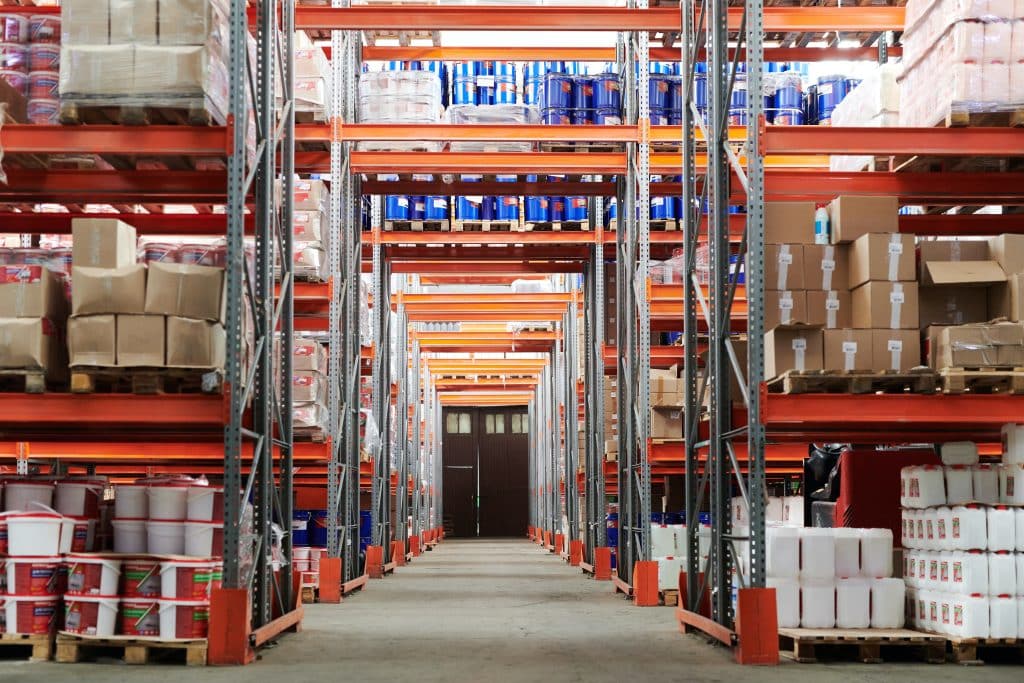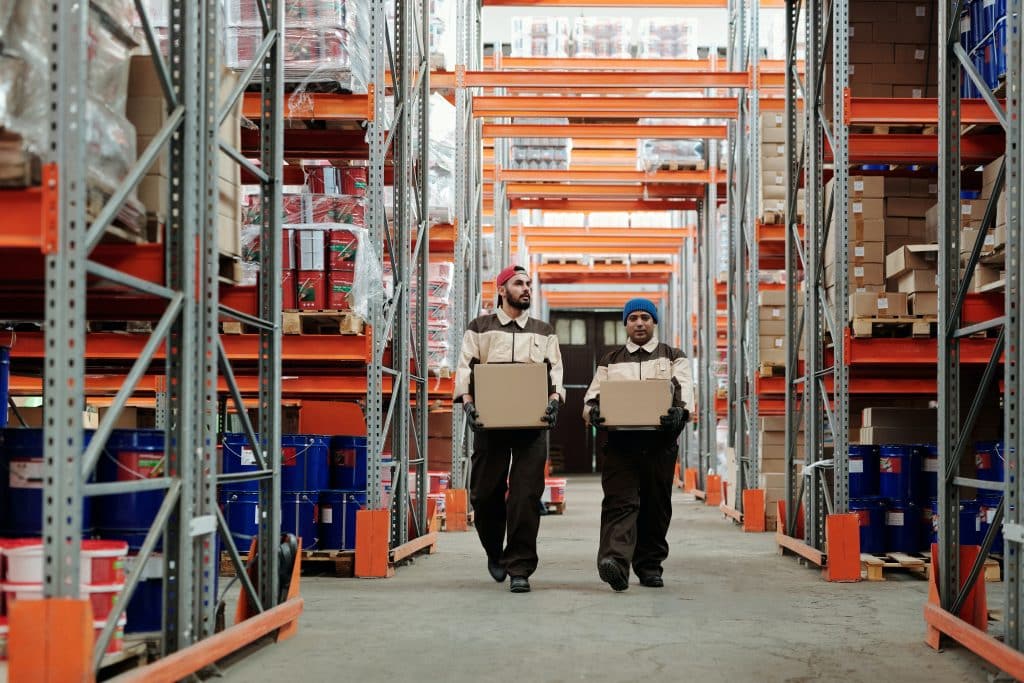Anyone who sells products online needs a place to store those products before they get shipped off to someone’s happy home, office, etc. For those companies there are different inventory storage options out there, the most common being distribution centres, fulfilment centres and warehouses.
Once a company has a storage facility in place, making that facility as efficient as possible becomes the prime focus. One of the best ways to optimize your warehouse’s efficiency is by implementing a Warehouse Management System (WMS).
In this blog we will be discussing how Warehouse Management Systems move your inventory faster, their inherent pros and cons and how data integration ties into it all.
Let’s get straight into it.
How Your WMS Moves your Inventory Faster
A WMS is capable of doing a lot for a business. A good WMS has the capability of great technical and efficient processes. At a high level, a WMS with proper inventory tracking gives your business better accuracy into your exact inventory levels, the location of each item, updated delivery statuses and other inventory-related information. With that accuracy it allows your businesses to work at a higher velocity and increase inventory turnover. A WMS can also reduce the likelihood of errors that could occur when a product is shipped out, this means that a significant burden is lifted off your staff’s shoulders and you will have fewer dissatisfied customers. Afterall, with better organization comes better execution.
However, like any software, there are gaps that come with it, for example, if a human error is made at a manual stage of the process, that may lead to bad data in your WMS. In order to prevent those human errors, automating your data process is the only way to do so. Now, your business is manually inputting data only ten times a month, accidents can still occur but you have time to double-check the data. However, if your business has to manually input new data multiple times a day, it might be worth seriously considering integrating your systems with reliable Connectors. With reliable integrations, you prevent costly human error, waste valuable time, risks customer satisfaction and can be a long-lasting thorn in a warehouse’s side.

A WMS’s Purpose
WMS’s exist to improve a company’s warehouse efficiency. If we were to take a deeper look into it, we can start to understand how it optimizes business profits. It starts with two words, turnover rate. The higher the turnover rate, the more profitable the business is since the capital tied up in inventories is reduced for the same turnover. This is where it ties together. Any money tied up in the warehouse can’t be used for any other purpose. At the same time, there are costs for storage itself and opportunity costs become relevant.
Different companies will naturally have different rates of inventory turnovers dependent on what they sell, market saturation/competition and trends. There are generally two groups. Fast movers and slow movers.
Fast Movers:
Fast Movers are goods that spend little time within a warehouse because they get shipped out quickly. Large quantities are handled in a short time. Fast movers are goods of daily use products that are bought quickly and without large investments. They are usually not stored for long, so they hardly block storage space and cause only low storage costs. With smaller orders at a higher frequency, there is a higher chance of order and shipping errors.
Slow Movers:
Slow movers on the other hand have a slow sales cycle. They usually remain in the warehouse for a longer time, occupying storage space. Slow-moving items are usually goods for which there is little or seasonal demand. Often a high price or poor product placement is to blame for the bad sales speed. Since slow-moving products require more storage capacity, they increase storage costs. It should, therefore, be a regularly asked question within such businesses whether it’s worth having these products take up the space.

Recent History of WMS
With technology advancing the way it currently is, it’s never been an easier time to understand how such a complex system can maximize efficiency to the highest possible level.
In the early 2000’s, when computers were gaining speed and robotic systems were already being used by the auto industry. Warehouses slowly became more advanced and started to rely more on the evolving technology to meet increased demand and avoid overstocking. That point is no more true than today. With cloud computing now being the norm, WMS’s require less maintenance from your team. They have become cheaper and faster while remaining consistently accurate. Generally cloud services are paid using a SaaS model. Those buying into a SaaS-based WMS’s are buying services for their currents needs but expect to grow with that platform over time.
What to Expect in the Future
Generally, by looking in the past we can get a rough idea of what to expect in the future. WMS’s are not exempt from this pattern but there are some extra variables to consider. Within the next few years, we could see some dramatic changes in how warehouses manage inventory and continue to avoid the risk of excess inventory. All the while meeting the demands of real-time order fulfillment and delivery. That future relies on strong integration connectors to connect those systems together.
Whether you classify your business’s inventory as a fast or slow movers, or consider yourself a hybrid, implementing a WMS might be something worth considering, but to really make your warehouse work to its full potential, integrating your systems together and allowing for seamless data movement between your platforms will allow for your business to achieve what you want it to achieve. Save your employees time by avoiding having to troubleshoot issues that take away time from their already busy schedule, allowing them to focus on the important things that matter to your business.
The Pros and Cons of WMS
A WMS may not solve all the problems a warehouse can be having which is why it’s important to summarize just some of the pros and cons.
Pros:
- Faster Inventory Turnover: A WMS can recommend how much inventory to buy and when to buy it, based on a businesses sales performance
- Increases Customer Satisfaction: A WMS organizes the warehouse which in-turn allows for better execution. More customers get their packages on time and at the right place, saving any seller from a big headache.
- Suggestions toward inventory buying: To keep inventory at an optimal level every time. So there’s no overbuying – creating a waste of inventory space as well as tied up assets.
- Keeping track of up-to-date production information: Making managing the entire process easier.
Cons:
- Expensive: Even on its own, a WMS is not cheap. To get access to its benefits someone will need to cough up the cash.
- Not Always Clear Cut: You may be led to believe your WMS is capable of certain levels of connectivity between your other apps, without it being made abundantly clear that the level of connectivity you’re trying to reach may not be possible without data integrations to other systems.

Summary
WMS’s are wonderful tools that will help your business grow further with efficiency. When deciding on whether to choose one take a look at your business’s warehouse situation and see whether or not you have slow or fast inventory.
The key questions to ask your business are strategic ones.
- What key functionalities are you trying to get out of an WMS?
- Will it be connected to an ERP?
- Will it be connected to an accounting system?
Functionality becomes dependent on your businesses specific wants and needs. If you are unsure of what kind of functionality you need, depend on impartial experts like VL OMNI. We can help identify when data integration needs to be implemented with a tech stack that involves a WMS
VL OMNI has always taken a consultative approach to growing Merchants. Understanding your strategic growth goals allows us to plan a solution thoroughly before implementation. This means. We want to figure out the solution to your problem before we start implementing anything. That means talking with you, in-depth, about what you want accomplished. Then diving into the details to not only figure out if it’s possible but how we will implement it.
 D365 Business Central
D365 Business Central Netsuite
Netsuite


